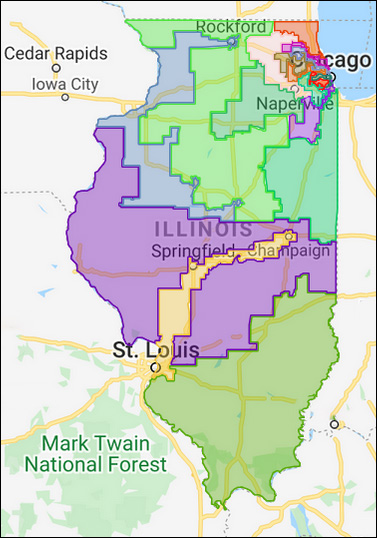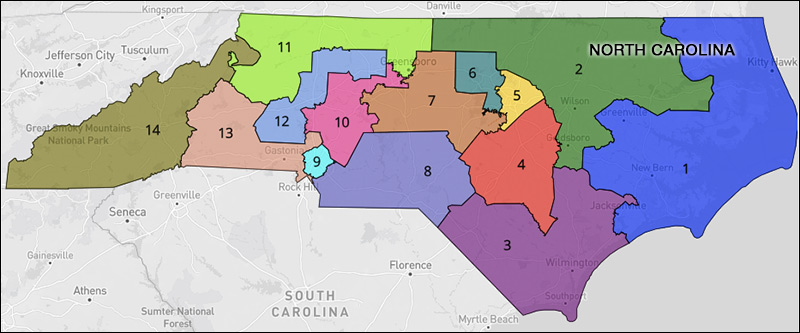
Click on image to go to FiveThirtyEight.com’s interactive redistricting map.
By Jim Ellis
March 18, 2022 — Pennsylvania’s candidate filing period closed late Tuesday, yielding official May 17 primary candidates for the Keystone State’s federal and state offices. A total of 11 contenders are competing in the Republican gubernatorial primary, while Attorney General Josh Shapiro is unopposed on the Democratic side. Gov. Tom Wolf (D) is ineligible to seek a third term.
The Senate race is also a crowded affair, with seven Republicans compared to five candidates in the Democrat primary. The Senate contest is also open because Sen. Pat Toomey (R) is not seeking a third term. A total of 66 Democrat, Republican, and some minor party candidates filed for the congressional races. The state’s Independent and minor party filing deadline does not conclude until Aug. 1.
Among the Republican gubernatorial candidates are two former US House members, Lou Barletta and Melissa Hart, two state senators, Doug Mastriano (R-Fayetteville) and Senate President Pro Tempore Jake Corman (R-Bellefonte), former US Attorney Bill McSwain, Montgomery County Commissioner Joe Gale, and former Delaware County Commissioner Dave White. Shapiro will begin the general election campaign as the favorite, if for no other reason than seeing the eventual Republican nominee having to fight through a tough crowded primary.
The Senate race features primaries on both sides. The Democrats are in basically a two-way affair between Lt. Gov. John Fetterman, who leads in all polls and fundraising, and US Rep. Conor Lamb (D-Pittsburgh). Both Democrats are from western Pennsylvania, but Fetterman should have the advantage in the vote-rich southeastern PA region considering his statewide ties, thus making him the favorite for the party nomination.
Two candidates on the Republican side have been spending heavily to attempt to separate themselves from the rest of the field, and they look to have succeeded. Former hedge fund CEO David McCormick is leading in the latest two statewide surveys over television doctor Mehmet Oz. Former US Ambassador to Denmark Carla Sands and 2018 lieutenant governor nominee Jeff Bartos are the trailing candidates.
The Pennsylvania Senate general election will be one of the most important in the nation, and the results will go a long way toward determining which party will control the majority in the next Congress.
In the congressional races, Reps. Brendan Boyle (D-Philadelphia), Dwight Evans (D-Philadelphia), Mary Gay Scanlon (D-Swarthmore), Dan Meuser (R-Dallas), Lloyd Smucker (R-Lancaster), John Joyce (R-Hollidaysburg/Altoona), Guy Reschenthaler (R-Peters Township), Glenn Thompson (R-Howard/State College), and Mike Kelly (R-Butler) all should have easy rides to re-election. Rep. Reschenthaler has no Republican or Democratic opposition post-filing. Rep. Joyce faces only one minor Republican opponent.
Rep. Fred Keller’s (R-Middleburg) safe Republican 12th District was eliminated because Pennsylvania lost a seat in national reapportionment. He originally was going to challenge Rep. Meuser in the 9th District Republican primary, but later decided to retire.
Pennsylvania hosts four major congressional races: two open seats and two top challenger efforts against vulnerable Democratic incumbents.
Rep. Lamb’s open 17th District, which sits west of Pittsburgh and stretches to the Ohio border, has a rating of D+1 according to the FiveThirtyEight data organization; this is the type of seat that Republicans must convert if they are to win the majority in November.






